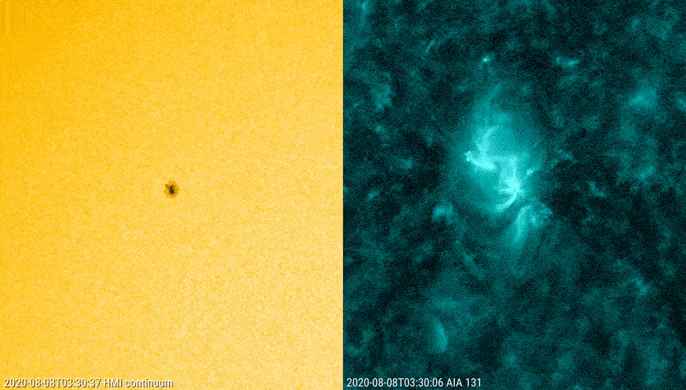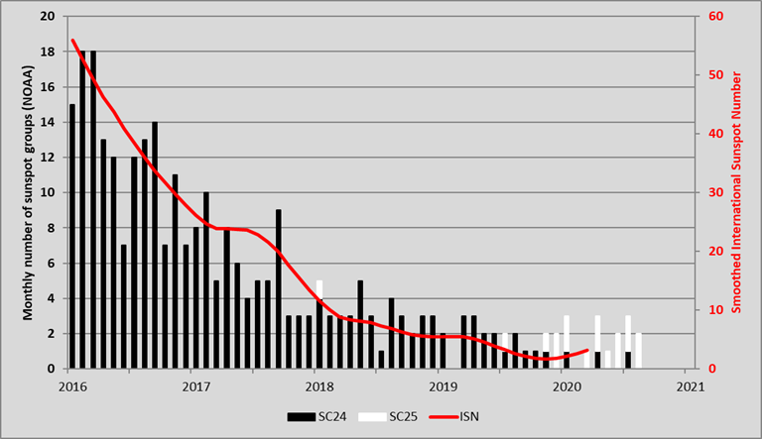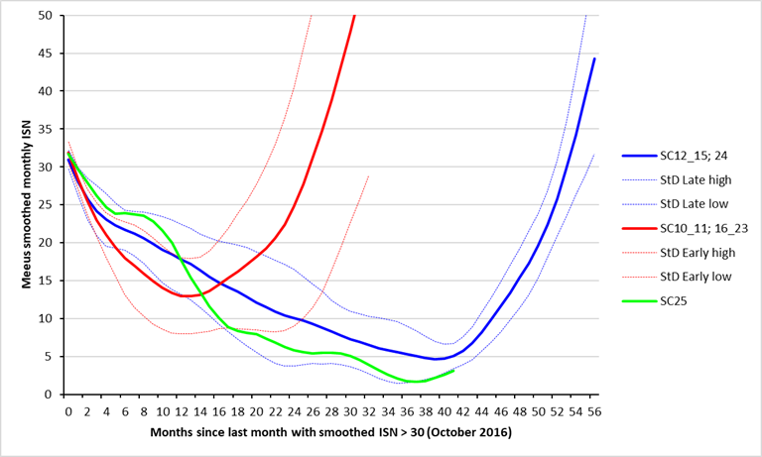On 8 August, a C1.5 flare erupted in NOAA 2770. In the clip underneath one can see on the left white light images of the sunspot region, and on the right imagery in extreme ultraviolet, showing the flare at its peak near 03:49UT. Imagery courtesy of SDO/HMI and /AIA 131. No coronal mass ejection was associated with this modest eruption.

Active region NOAA 2770 has a latitude of +22 degrees and belongs to the new solar cycle 25 (SC25). Putting the monthly number of sunspot regions in a bar chart, and distinguishing the old from the new solar cycle groups by respectively black and white bars, one can see that the number of solar cycle 25 (SC25) groups started to gradually increase during the second half of 2019. This evolution has continued thoughout 2020 (NOAA 2770 already included in the August data). Solar cycle minimum, as represented here by the smoothed monthly sunspot number (SILSO) usually takes place within a few months of the break-even between the number of groups from the two cycles, i.e. the month where the number of SC25 groups becomes larger than that from SC24. Current data seems to show that this was indeed the case with a sunspot minimum apparently having occured late 2019.

The graph underneath compares the ongoing SC24-25 transit to those from previous solar cycles, based on the International Sunspot Number (ISN). They have been conveniently grouped into two bins: cycles 12-15 and 24 (blue curves), and cycles 10-11 and 16-23 (red curves). The dotted curves indicate the standard deviation from the average curve (thick lines). Point "0" is the last month with a smoothed sunspot number above 30. This value was arbitrarily chosen, but could not be much lower as some cycle minima had smoothed sunspot numbers around 18. Month "0" for the current minimum transit was in October 2016. For the "red" group of solar cycles, a minimum occured on the average 13 months later. However, for the other group (blue curves) this minimum took place only after 39 months. The final timing is mostly determined by the strength of the new cycle: more active cycles tend to start their rise earlier (after 8-15 months; "red" group), though there have been 2 notable exceptions: SC17 and SC22. The smoothed sunspot number suggests a minimum late 2019 near the projected time of minimum of the low activity cycle curves (blue group).






